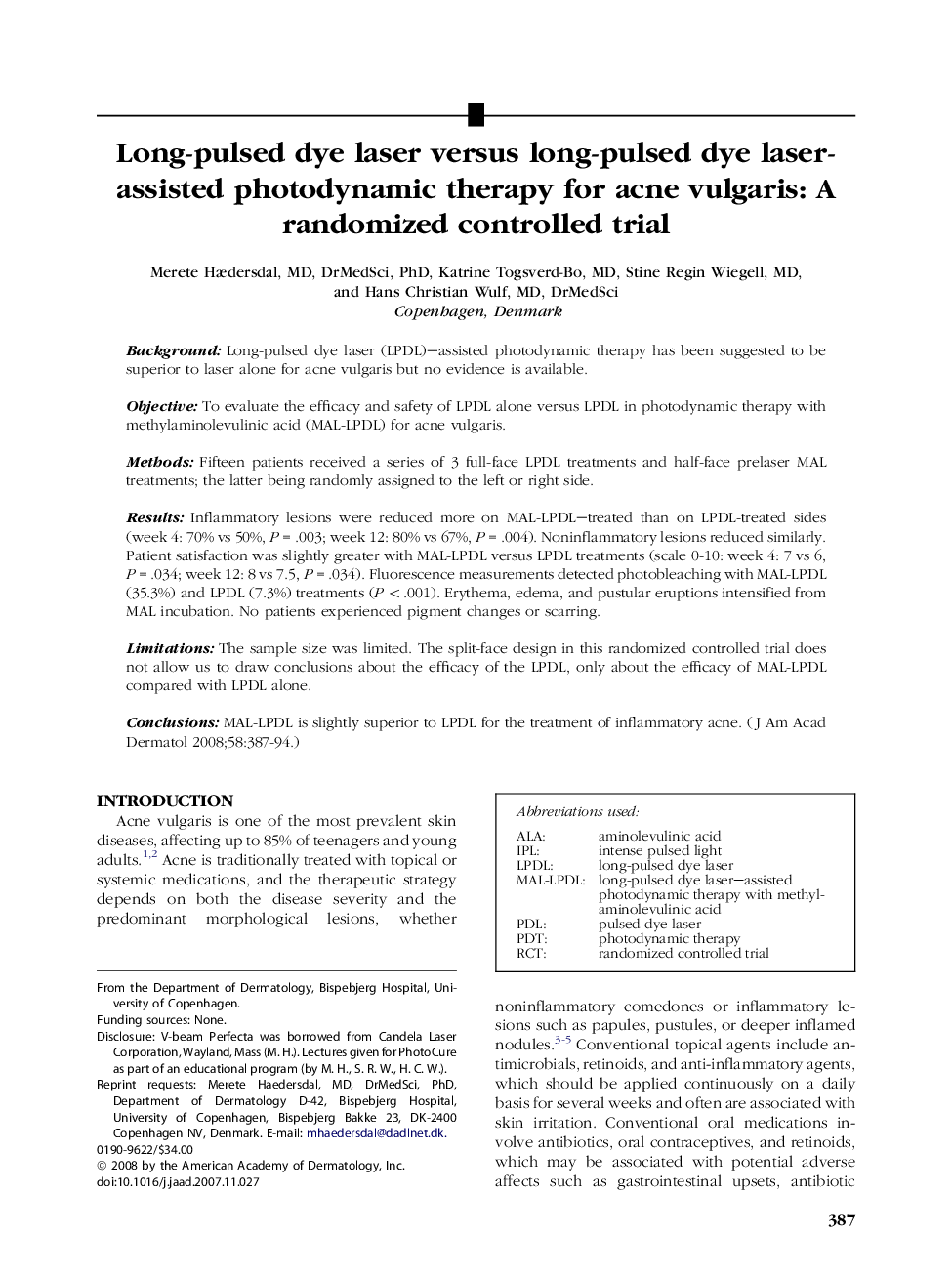| Article ID | Journal | Published Year | Pages | File Type |
|---|---|---|---|---|
| 3211146 | Journal of the American Academy of Dermatology | 2008 | 8 Pages |
BackgroundLong-pulsed dye laser (LPDL)–assisted photodynamic therapy has been suggested to be superior to laser alone for acne vulgaris but no evidence is available.ObjectiveTo evaluate the efficacy and safety of LPDL alone versus LPDL in photodynamic therapy with methylaminolevulinic acid (MAL-LPDL) for acne vulgaris.MethodsFifteen patients received a series of 3 full-face LPDL treatments and half-face prelaser MAL treatments; the latter being randomly assigned to the left or right side.ResultsInflammatory lesions were reduced more on MAL-LPDL–treated than on LPDL-treated sides (week 4: 70% vs 50%, P = .003; week 12: 80% vs 67%, P = .004). Noninflammatory lesions reduced similarly. Patient satisfaction was slightly greater with MAL-LPDL versus LPDL treatments (scale 0-10: week 4: 7 vs 6, P = .034; week 12: 8 vs 7.5, P = .034). Fluorescence measurements detected photobleaching with MAL-LPDL (35.3%) and LPDL (7.3%) treatments (P < .001). Erythema, edema, and pustular eruptions intensified from MAL incubation. No patients experienced pigment changes or scarring.LimitationsThe sample size was limited. The split-face design in this randomized controlled trial does not allow us to draw conclusions about the efficacy of the LPDL, only about the efficacy of MAL-LPDL compared with LPDL alone.ConclusionsMAL-LPDL is slightly superior to LPDL for the treatment of inflammatory acne.
